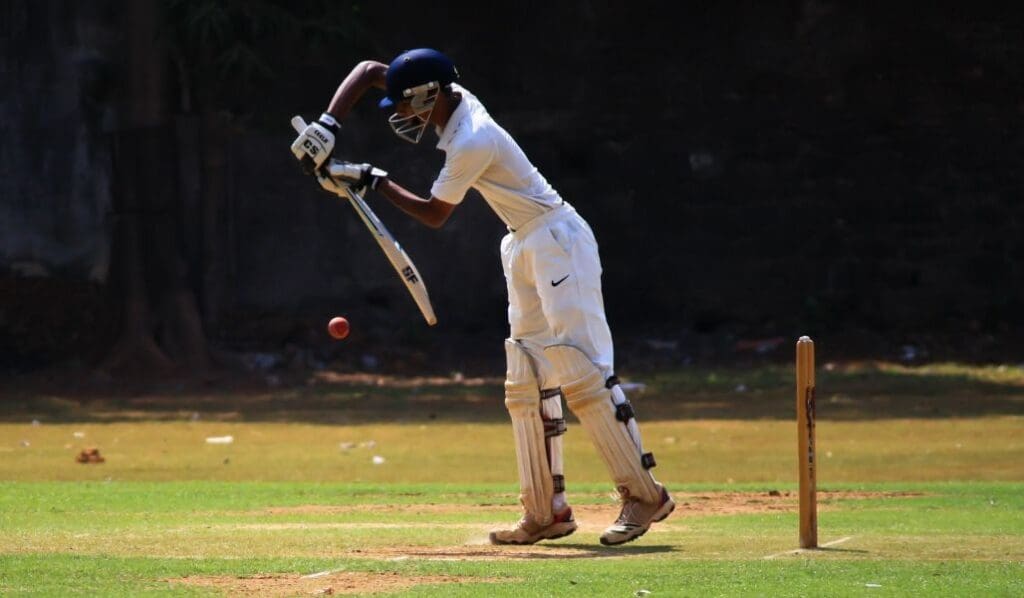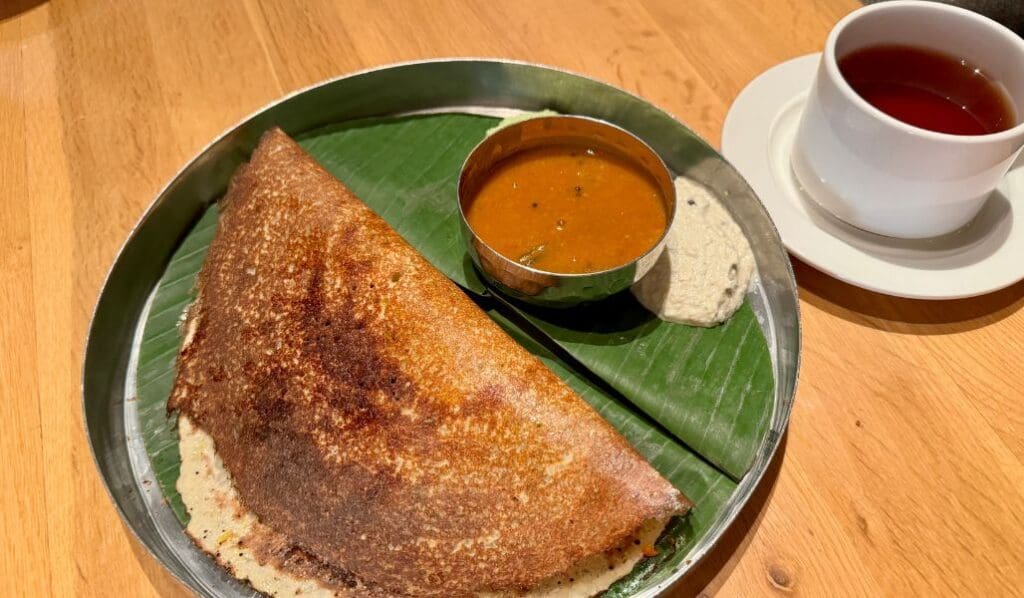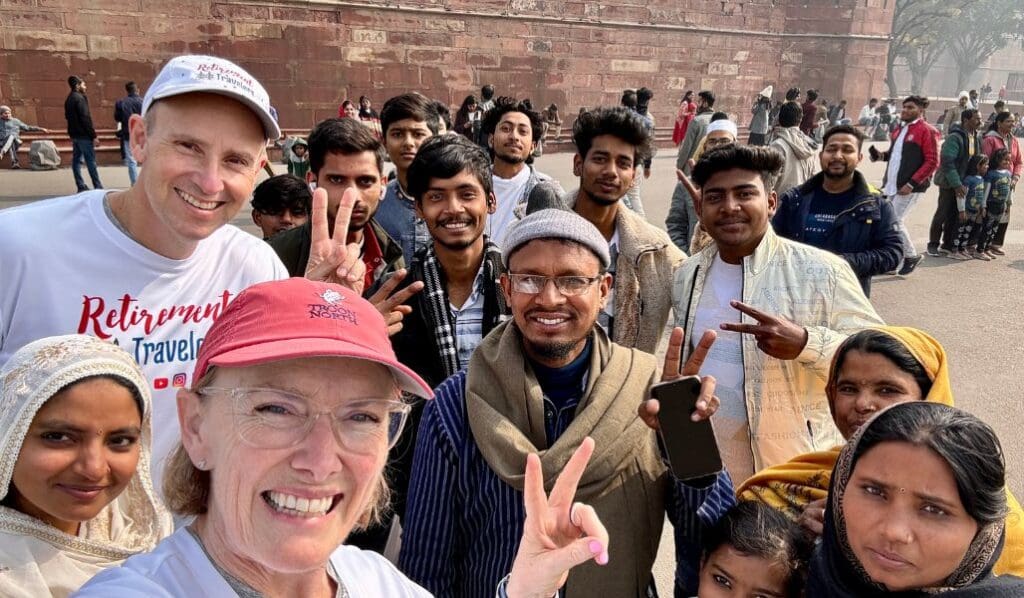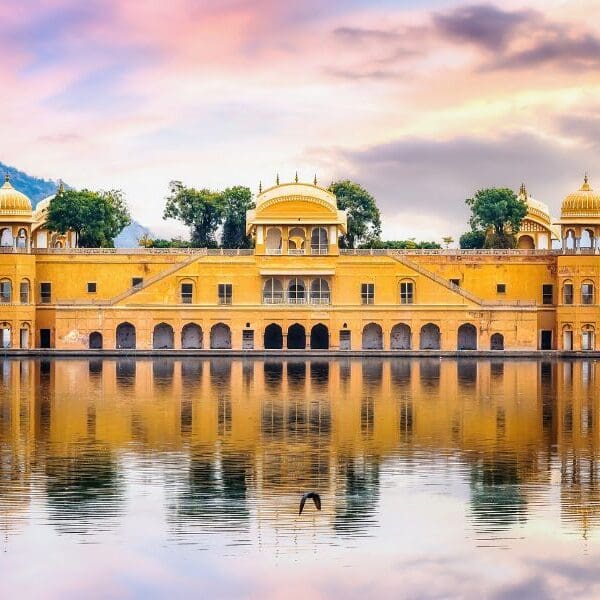Last Updated: December 15, 2024
Our time in India was nothing short of incredible and unforgettable. We spent a month unveiling its wonders, trying to experience a little of the North and the South. Our guides on Delhi, Agra, Jaipur, Udaipur, Mumbai, and Kochi will help you take the hassle out of planning your own India itinerary. But traveling to India is not as zen as the yoga retreats make it seem. In fact, if you’ve ever wanted to put your patience to the test, then India is the place to do that.

India is a diverse and culturally rich country. Traveling is more of an adventure and requires some know-how for us Western travelers. Understanding India customs can enhance your experience tenfold, so we’ve put together this guide on things to know before visiting India with advice you can use regardless of where your India itinerary takes you.
India Customs to Know Before Visiting
Language
Although English is India’s secondary language and is commonly spoken throughout, don’t assume that everyone is proficient. We found the people in the more touristy areas spoke more English. To avoid misunderstandings, keep your English simple. For the same reason, if you get people abruptly addressing you, don’t assume they are being rude – it’s a combination of language barrier and cultural differences, so be patient and understanding. Better yet, learn some expressions in the local language and make new friends. Here is one to get you started. The traditional greeting in India is “Namaste” where people bring their palms together in front of the chest as a sign of respect. Avoid shaking hands, especially if greeting someone of the other sex.

Body Language
Head wobbling is the body language king in India. There is nodding, bobbling, and shaking of the head and they all can mean very different, sometimes opposing, things. You could be getting a ‘yes’, ‘no’, ‘maybe’, ‘thank you’, or an affirming ‘ok’. It all depends on the context. If you are unsure which answer you are getting, just ask for verbal confirmation, and by the end of your stay you will be well versed in Indian body language.

India Custom for Public Display of Affection
Public display of affection with the other sex is frowned upon and should be kept private. But you will often observe men holding hands and embracing, which is a sign of trust and friendship. Girlfriends show the same platonic affection toward each other but are a rarer sight since the streets are usually male-dominated.
India Custom for Feet Etiquette
In Indian culture, the head is considered the holiest part of the human body. Consequently, the dirtiest part of one’s body is their feet. And while touching another person’s head is thought to be offensive, touching anything with the soles of your feet is the most disrespectful act of all. So, keep your soles glued to the floor, don’t perch them up on chairs, and remove your shoes when entering someone’s home or a place of worship. Unless you want to become a public enemy like the Australian cricket player who decided to rest his feet on the Cricket World Cup trophy.

Understanding Cricket
Speaking of cricket, treat it like a religion. The aforementioned case involving feet and the flood of backlash and complaint letters it brought on, calling the cricket trophy “sacred”, only goes to highlight the importance of this sport to Indians. As you journey through the country, you will notice every patch of free space is turned into a makeshift cricket field. Kids grow up playing the sport and idolizing the athletes, many of whom have come from humble beginnings. As a source of inspiration, cricket is deeply ingrained in Indian culture and the national identity of the people regardless of their beliefs and class. If you don’t share the same frenzy toward the sport, its effect is at least something to admire and make an effort to get to know. Perhaps let the kids teach you the ropes?
John actually tried to play the Indian custom of cricket on the beaches of Mumbai and quickly learned he didn’t even know how to properly hold the racket. The kids on the beach were wonderful hosts and were patient with his lack of knowledge.

Be Polite but Firm
Don’t be afraid to sound assertive when it’s necessary. Throughout our travels we experienced countless occasions being offered things and services we don’t need, oftentimes far too persuasively. This will help you avoid scammers and aggressive selling techniques of vendors, touters, and taxi drivers. To filter potential scams, make sure to do your own research beforehand and ask thorough questions to be able to evaluate the reliability of the answers and seek proof in examples and reviews.
India Custom of Modest Attire
India is home to many religions some of which include Hinduism, Islam, Sikhism, Christianity, and Buddhism. As a guest navigating a foreign country, you may unknowingly end up in a place of worship or a conservative neighborhood, so it’s best to dress appropriately at all times. This means covering your legs and arms, which not only accounts for respect in religious places and towards local customs but also protects you from the harsh sun and unwanted attention. Make sure to pack light, breathable clothing, and wear long bottoms and a top that covers your arms.

Hot Tip: Carry around a scarf, shawl, or an oversized linen shirt.
The Holy Cows
One thing you might already know about India is that the cow is a holy animal in Hinduism, the religion that makes up nearly 80% of the country’s population. That’s why you won’t find beef widely consumed in India. But what may come as a surprise is just how many cows, and cattle in general, freely roam the city streets. A cow has the full right to cozy up in the middle of a busy road and nobody will do a thing to move her. No amount of honking will move those girls, so people drive around them instead, which only adds to the already intense traffic created by various modes of transportation. Hmm, is that why traffic rules in India are so laissez-faire? Needless to say, you should never ever dishonor a cow. And probably don’t rent a car to drive by yourself either.

Animals in Urban Areas
But it’s not only the cows you will see wandering in urban areas, other animals like stray dogs and monkeys are common too. Ultimately, we recommend just avoiding them all. Unfortunately, dog attacks do happen in India, so maintain a safe distance. As for the monkeys, they are even more of a menace in cities. Be aware of your belongings and never feed a monkey or they will steal your possessions for ransom.

Local Cuisine & Hygiene
Indian cuisine varies across regions featuring an array of bold flavors and it would be a shame not to thoroughly indulge, which unfortunately is something most western travelers fear doing for the risk of contracting ‘Delhi belly’ – simply put a serious case of traveler’s diarrhea. This usually happens due to questionable hygiene standards and food contamination. There is no guarantee that you will escape unscathed, but there are ways to reduce the risk.

- Use hand sanitizer religiously.
- Use hand sanitizer to disinfect your utensils before eating.
- Do not consume fresh produce as it may have been washed in contaminated water.
- Avoid ordering meat and dairy at unvetted establishments.
- Go easy on the spice if you are not used to it.
- Make sure your food is freshly cooked to order and hasn’t been sitting out for an unknown duration of time.
- Take food tours to seek out recommendations to reputable dining venues, speak to your concierge, read reviews, and, of course, our blog posts.
- Use bottled water to brush your teeth.
- And, goes without saying, drink bottled water exclusively.
India Custom of Personal Space
Traveling to India may just be an introvert’s biggest challenge. India is extremely chaotic and crowded and there seems to be no concept of personal space, which makes sense when you consider that it is the most populous country in the world as of 2024. Getting on and off the train is like swimming against the current. And it’s absolutely normal for strangers to rub against you while riding public transport, breathing down your spine while waiting in a queue, possibly peaking over your shoulder and jumping said queue. Be patient and watch out for your belongings in case there are pickpocketers in the crowd. We were pleasantly surprised in Delhi, when people offered us seats several different times.

Getting Asked for Selfies
Expect to be asked for photos. A lot. Politely oblige or decline as you see fit, but don’t get frustrated as taking a selfie with a white tourist is only part of the fun for them. And the incessant staring at times is mostly out of curiosity. Stay cautious, but embrace it and turn it into an opportunity to make friends. We sure did! And if the lack of personal space gets too exhausting, take a break back at your accommodation. Everyone was very kind and curious and we had so much fun interacting with this Indian custom of selfies.

Punctuality
Make sure to pack extra patience and adapt a flexible itinerary because punctuality is not India’s strong suit. So much so that Indians seem to have a world-famous reputation for tardiness called ‘Indian Stretchable Time’ in place of Indian Standard Time, which apparently, everyone interprets differently. There are a few reasons for that – extreme traffic, poor road quality and general attitude. Nobody is in a rush in India. How does that affect you as a traveler? You might experience transportation and tour delays. We suggest factoring buffer time into your plans and maintaining tight communication and follow-ups with any organizers or service providers to help anticipate schedule changes. Whatever you do, don’t get frustrated, fall in with the pace of life in India, and practice staying in the present moment.
Having Enough Change
Cards are not as widely used as a method of payment, so having enough cash on you is vital to enjoying a smooth day of sightseeing. If you plan on visiting local spots, especially off the beaten path, you should carry sufficient change for your plans as sometimes venues and shopkeepers don’t have enough or short-change you. We recommend breaking down your large bills at your hotel every day before heading out and counting what you receive back when paying for things.

Inequality
Visiting India for the first time may be overwhelming for many reasons. For one, the level of poverty is confronting, it’s everywhere, and there is nothing you can do about it. The caste system, which divides society into 5 strict categories, still exists and influences social dynamics in India. It’s a complex topic to comprehend as a foreigner and navigate as a tourist. We recommend being aware, observant, and respectful toward everyone. We arrived in India with an open mind and, if anything, learned how happy one can be with less.
Hospitality
The hospitality part India customs is parallel to none. They even have a proverb that says “The guest is God”. So even if the people welcoming you have very little, they will do everything to make you feel most welcome. You will get spoiled rotten with kindness and attention. Being a good guest is equally important. It’s customary to bring a small gift as a token of appreciation if invited to someone’s home. Don’t forget!

We hope our travel advice on common India customs is insightful and results in you having a smooth and memorable stay. Let us know in the comments which of these tips for visiting India helped the most!
Happy journeys,





Helen Morris
Thank you so much for this info as well as your VLOG. We’re on our way to Sri Lanka after spending the last 5 months in South East Asia and then we’re off to India. I was really quite nervous about India and you guys have really truely put my mind at rest!